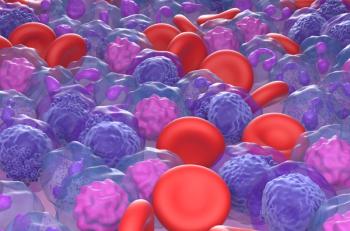
Daratumumab Access Differences Highlight Potential Racial Disparities in MM Care
This retrospective chart review investigated outcomes among patients who are White or Black on a daratumumab regimen for multiple myeloma (MM).
Uneven access to
Data from clinical trials at Levine Cancer Institute in Charlotte, North Carolina, and Weill Cornell Medicine in New York, New York, that encompassed patient characteristics, treatment patterns, and patient outcomes—overall response rate (ORR), progression-free survival, and time to next line of therapy (LOT)—bear out these retrospective chart review findings for the adult patients (n = 89 Black patients; n = 163 White patients) who began any-line daratumumab treatment between November 16, 2015, and May 2020.
“While its safety and efficacy are well documented, there is limited real-world information on its use and outcomes in patients of different races,” the authors wrote. “Real-world data on the use of therapeutics and clinical outcomes in patients with MM of different races can help to determine whether disparities exist in the US, which could guide the improvement of diagnostic, preventative, and therapeutic approaches.”
The Black patients in the study were younger at their diagnosis, had approximately a 27% longer waiting period between their MM diagnosis and starting daratumumab, and had more therapies prior to daratumumab initiation compared with the White patients:
- Age: 61.7 vs 67.0 years
- Elapsed time: 43.2 vs 34.1 months
- Prior LOTs: 3 vs 2
More Black patients received 3 or more prior LOTs before starting on daratumumab vs White patients, at 55.1% compared with 36.8%, with similar trends seen among those who received proteasome inhibitors or immunomodulatory drugs, at 96.5% vs 93.9% and 95.3% vs 89.9%, respectively.
However, even though MM stage and cytogenetic profiles were similar overall, more Black patients than White patients had unknown cytogenetic risks (59.6% vs 45.4%) and more White patients than Black patients had a high-risk cytogenetic profile (37.1% vs 22.2%). In addition, for a subanalysis that looked at initiating daratumumab in the second line, fewer Black patients had high-risk cytogenetic profiles vs White patients (9.4% vs 20.3%) but a longer time from diagnosis to treatment initiation (45.1 vs 37.4 months).
Trends for treatment initiation in the first, second, and third lines differed between the patient groups:
- First-line treatment: 4.5% among Black patients vs 9.2% among White patients
- Second-line treatment: 12.4% vs 25.2%, respectively
- Third-line treatment: 83.1% vs 65.6%
Significant variations were not seen between the patient groups in any of the 3 principal outcomes.
More White than Black patients were on a quadruplet regimen containing daratumumab (7.4% vs 1.1%) for their first treatment with the medication, but that this treatment duration was longer among White patients, at 10.6 vs 9.0 months.
The ORR was identical for both patient groups when starting daratumumab as a first-line treatment, at 100%; in the second line, this was 90.9% for Black patients and 82.9% for White patients; and in the third line, 67.6% and 65.4%, respectively. Very good partial response rates were also higher for the Black patients in the 3 treatment initiations. Overall, however, ORRs were similar for the study, at 70.6% and 70.3% for Black patients and White patients, respectively (adjusted odds ratio, 1.06; P = .843).
In addition, although median times to disease progression (13.5 vs 17.9 months) and to next treatment (13.4 vs 15.6 months) were shorter among the Black patient population compared with the White patient population, adjusting for age and prior lines of therapy negated these findings.
“Although responses to newer medications are similar across racial/ethnic groups, African Americans may not be reaping the full benefit of these treatments,” the authors wrote. “Moreover, while there were no differences between groups in treatment duration and response to daratumumab, Black patients received more lines of therapy overall prior to the initiation of daratumumab. Thus, Black patients may have had later access to daratumumab than White patients.”
They highlight that their findings suggest daratumumab access is persistently uneven and that health care disparities in the United States require ongoing efforts to overcome.
“Ongoing research highlighting such disparities and their causes across disease areas,” they concluded, “is essential for informing strategies to reduce inequality in health care.”
Reference
Atrash S, Thompson-Leduc P, Tai M-H, et al. Patient characteristics, treatment patterns, and outcomes among black and white patients with multiple myeloma initiating daratumumab: a real-world chart review study. Clin Lymphoma Myeloma Leuk. 2022;22(8):e708-e715. doi:10.1016/j.clml.2022.03.014
Newsletter
Stay ahead of policy, cost, and value—subscribe to AJMC for expert insights at the intersection of clinical care and health economics.













































